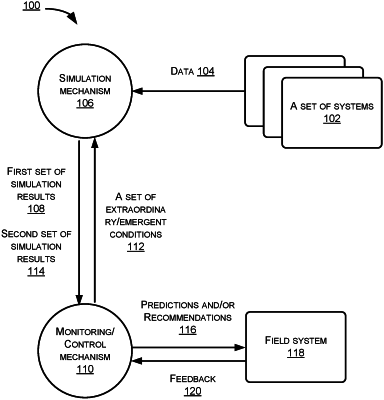| CPC H05K 7/20836 (2013.01) [G06F 1/206 (2013.01); G06F 30/20 (2020.01); H05K 7/20745 (2013.01); G06F 2111/10 (2020.01); G06F 2119/08 (2020.01)] | 20 Claims |

|
1. A method comprising:
collecting data of a plurality of systems, each of the plurality of systems including at least one first cooling element and at least one first heat-generating element;
conducting a first simulation using a simulation model based on the collected data to generate a first set of simulation results;
conducting a first training on a control system to obtain a first trained control system based on the first set of simulation results and a result generated by the simulation model based on the collected data;
using the first trained control system to monitor a field system with a space having at least one second cooling element and at least one second heat-generating element and to control the at least one second cooling element and the at least one second heat-generating element;
generating a set of conditions using the first trained control system, the set of conditions including an extraordinary condition;
sending the set of conditions to the simulation model;
conducting a second simulation using the simulation model based on the set of conditions to obtain a second set of simulation results;
conducting a second training on the first trained control system to obtain a second trained control system based on the second set of simulation results and feedbacks from the field system; and
using the second trained control system to monitor the field system with the space having the at least one second cooling element and the at least one second heat-generating element and to control the at least one second cooling element and the at least one second heat-generating element.
|